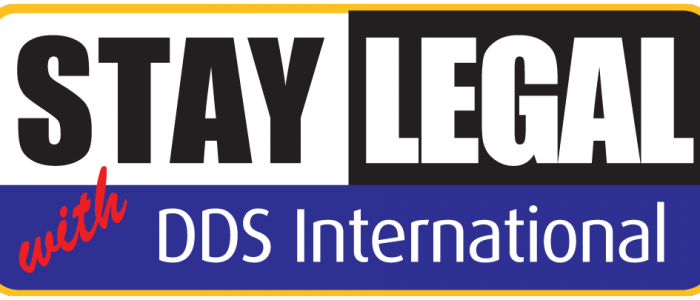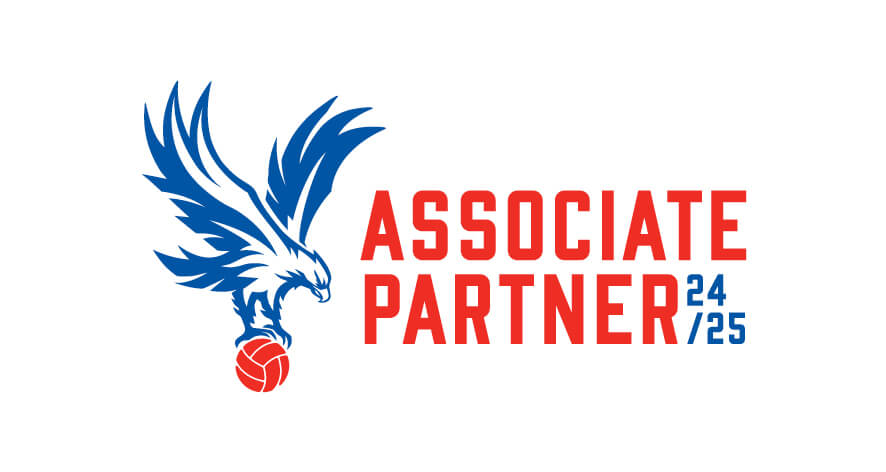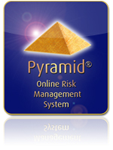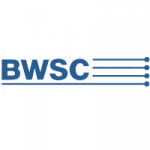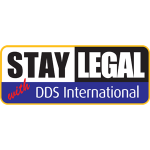The Anatomy of a Fire Risk Assessment Report
In this article we take a look at the anatomy of a fire risk assessment report and find out what should be included. This article can be used as a guide when you receive a report following a fire risk assessment to ensure your fire risk assessment meets the required standards.
The sections below are based on the fire risk assessment report that is generated by our PYRAMID™ Online Risk Management System, which means some of the details below are exclusive to assessments completed by DDS International consultants and clients. I will point out and describe any specific PYRAMID™ terms within this post.
I have also included some example fire risk assessment questions at the end of this post so you can see the types of questions that are completed during the assessment.
If you would like us to carry out a fire risk assessment for you, we now have an on-line fire risk assessment quote page where you can submit your details and we will return a quotation within 24 hours.
Fire Risk Assessment Cover
All DDS International fire risk assessments have a cover which contains the following information…
- Location being assessed
- Fire Risk Assessor
- Date of the Assessment
- Audit trail of previous assessments
- Validator
- Date of Validation
- Fire Risk Assessment Next Review Due Date
Audit trail of previous assessments – When we use the PYRAMID™ Online Risk Management System we can clone existing fire risk assessments and conduct the risk assessment using the cloned version as a reference. We can then update the cloned version with any necessary changes. The system keeps a record of who and when the cloning takes place for a full audit trail of changes over the years. Information includes the risk assessors name, their qualifications and any relevant dates.
Fire Risk Assessment Contents Page
Our fire risk assessments include a contents page of what will be included in the fire risk assessment report.
- Preface
- Executive Summary
- Building Overview
- Fire Protection
- Fire Hazards
- People at Risk
- Building Occupancy
- Means of Escape
- Overall Risk Summary
- Fire Risk Assessment, Significant Findings
- Fire Risk Assessment, Non-Compliant Findings
- Fire Risk Assessment, Compliant Findings
- Fire Risk Assessment, Questions Not Reviewed
- Appendix 1 – Methodology
- Appendix 2 – How Risk is Calculated
- Photo Addendum
- Supporting Documents
Fire Risk Assessment Preface
The preface of the assessment contains metadata about the risk assessment that has taken place.
- Organisation
- Location
- Address
- Risk Assessment Question Template
- Responsible Person
- Competent Persons
- Risk Assessment Started On
- Risk Assessment Completed On
- Risk Assessment Released On
- Report Completed By
- Excepts of any laws and regulations that the fire risk assessment adheres to
The word “released” used above is a PYRAMID™ term used to define a fire risk assessment that is live and in production. For example, a fire risk assessment started on the system will first have a status of “Started” and then “Completed” once the risk assessment has been completed. Once the risk assessment has been validated and proofed and is ready to be used it is released (releasing includes sending a copy and notifying the necessary contacts via email that it has now been released) and its status becomes “Released”.
Executive Summary
The executive summary of a fire risk assessment report contains information about the premises being assessed with an overview of the building, fire protection, fire hazards, people at risk, building occupancy, means of escape, comments and significant findings of the assessment.
Fire Risk Assessment Building Overview
- Approximate year of construction
- Building fabric(s)
- Building use (Animal Premises & Stables, Educational Premises, Healthcare Premises, Large Places of Assembly, Manufacturing, Office, Open Air Events, Residential Care, Retail, Shopping Mall, Sleeping Accommodation, Small/Medium Places of Assembly, Theatre, Cinema or Similar Premises, Transport Premises & Facilities, Warehouse/Factory)
- Approx floor space (m²)
- Number of floors
- Number of lifts
- Number of basements
- Number of stairwells
- Occupancy type (Single Occupancy, Multiple Occupancy (i.e. Tenants))
- Roof Fabric(s)
- Listed Building
- Building height (m)
- Features that may assist a fire to spread (e.g. communal areas, atrium, unprotected voids, roof voids, unprotected ducts etc)
- Detail of any recent structural alterations
- Any structural alterations planned within the next 12 months
- Any other information about the building which is relevant to the fire risk assessment
Fire Risk Assessment Fire Protection
- Local Fire & Rescue Service
- History of previous fires
- History of false alarms
- Fire fighting facilities (Fire Fighting Shafts, Fire Fighting Shafts with Lifts, Dry Risers, Wet Risers)
- If a fire alarm system is present, how is the alarm triggered? (Smoke Detection (automatic), Heat Detection (automatic), Fire Call Points (manual))
- Fire protection equipment (Water Fire Extinguishers, CO2 Fire Extinguishers, Foam Fire Extinguishers, Powder Fire Extinguishers, Fire Blankets, Fire Hoses)
- Sprinkler system coverage
- Type of extract or positive pressure control system covering common means of escape and/or common areas (Natural Extract, Mechanical Extract, Natural and Mechanical Extract, Basement Clearance, Pressurised)
- Any other information about fire protection which is relevant to the fire risk assessment
Fire Risk Assessment Fire Hazards
- Sources of Ignition (e.g. Electrical, Gas, Heaters, Cooking, Smoking in unauthorised areas, Contractors (hot works), Cooking – Kitchen, Electrical, Gas, Heaters, Lightning, Malicious (Arson), Plant Rooms)
- Sources of Fuel (e.g. Cardboard packaging, Combustible stock items, Combustible waste in service and common areas, Compressed gases, Cooking oils, Equipment, Flammable liquids, Furniture and fixtures, Rubbish, Rubbish and vegetation, Stationery and documentation)
- Sources of Oxygen (e.g. Natural, Air circulation systems, Medical gases and oxygen)
- If the premises contain any substances or materials, which if were subject to a fire could have a serious impact on the local environment/community
- If there are any structures, hazardous processes, explosives, highly flammable materials on the premises which could be hazardous to fire-fighters
- Any other information about fire hazards which is relevant to the fire risk assessment
Fire Risk Assessment People at Risk
- Responsible Person
- Competent Person
- Total number of employees
- Average number of people on the premises (including employees, guests, visitors, customers, contractors, patients and tenants)
- People identified as at risk, if there was a fire (Employees, Visitors, Guests, Customers, Contractors, Tenants, Patients)
- Considerations (Mobility Impairment, Vision Impairment, Hearing Impairment, Lone Workers, Elderly Persons, Language, Substance Abuse, Cognitive Disability, Young Persons)
- Any other information about people at risk which is relevant to the fire risk assessment
Fire Risk Assessment Building Occupancy
- Estimated maximum occupancy within the building within the specified times (00:00 to 06:00, 06:00 to 12:00, 12:00 to 18:00, 18:00 to 00:00 Monday, Tuesday, Wednesday, Thursday, Friday, Saturday, Sunday, Bank Holidays)
- Opening Times
- Any other information about building occupancy which is relevant to the fire risk assessment
Fire Risk Assessment Means of Escape
- Summary assessment of overall risk (High, Medium, Low)
- Travel Distances
- Any other information about means of escape which is relevant to the fire risk assessment
Fire Risk Assessment Overall Risk Summary
The PYRAMID™ Online Risk Management System has been developed to accurately calculate the overall risk of a fire risk assessment by taking into account compliant and non-compliant findings, significant and non-significant findings and observations made by the risk assessor.
Hazard from fire (likelihood of fire)
Low – Unusually low likelihood of fire as a result of negligible potential sources of ignition.
Medium – Normal fire hazards (e.g. potential ignition sources) for this type of occupancy, with fire hazards generally subject to proper controls (other than minor shortcomings).
High – Lack of adequate controls applied to one or more significant fire hazards, such as to result in significant increase in likelihood of fire.
Consequences for life safety in the event of fire
Slight Harm – Outbreak of fire unlikely to result in serious injury or death of any occupant (other than an occupant sleeping in a room in which a fire occurs).
Moderate Harm – Outbreak of fire could foresee result in injury (including serious injury) of one or more occupants, but it is unlikely to involve multiple fatalities.
Extreme Harm – Significant potential for serious injury or death of one or more occupants.
Risk to life from fire at these premise
Depending on the likelihood and consequences chosen above, the risk to life is automatically calculated as the below.
Trivial – No action is required and no detailed records need be kept.
Tolerable – No major additional controls required. However, there might be a need for improvements that involve minor or limited cost.
Moderate – It is essential that efforts are made to reduce the risk. Risk reduction measures should be implemented within a defined time period. Where moderate risk is associated with consequences that constitute extreme harm, further assessment might be required to establish more precisely the likelihood of harm as a basis for determining the priority for improved control measures.
Substantial – Considerable resources might have to be allocated to reduce the risk. If the building is unoccupied, it should not be occupied until the risk has been reduced. If the building is occupied, urgent action should be taken.
Intolerable – Building (or relevant area) should not be occupied until the risk is reduced.
Reducing or maintaining level
Another option for the risk assessor to select is the consideration that following the recommendations of the fire risk assessment what the level of risk will be to reduce fire risk to, or maintain it at an overall level.
Trivial – No action is required and no detailed records need be kept.
Tolerable – No major additional controls required. However, there might be a need for improvements that involve minor or limited cost.
Fire Risk Assessment, Significant Findings
During a fire risk assessment, the assessor will complete a series of questions which usually includes fields for capturing people at risk, comments, recommendations and a time-scale for when remedial actions must take place with a risk matrix for calculating the risk for this question. Please see the “Appendix 2 – How Risk is Calculated” section of this article to see how we calculate risk.
The fire risk assessment report should make it clear what significant findings have been found.
Fire Risk Assessment, Non-Compliant Findings
Please see above, the risk assessment matrix is used to calculate non-compliant findings.
Fire Risk Assessment, Compliant Findings
Please see above, the risk assessment matrix is used to calculate compliant findings.
Fire Risk Assessment, Questions Not Reviewed
The fire risk assessment report should show which questions have not been reviewed.
Appendix 1 – Methodology
In accordance with best practice guidelines detailed within the Regulatory Reform Fire Safety Order, a 5 step approach is applied during the DDS International fire risk assessment process. Identifying fire hazards and identifying people at risk are included in the executive summary. The fire risk assessment captures the information to Evaluate, remove or reduce and protect, record, plan, inform, instruct and train and Review.
Appendix 2 – How Risk is Calculated
Every fire risk assessment should have a way of calculating risk. Below is DDS International’s risk calculation that are used when completed a fire risk assessment question template.
RISK RATING = POTENTIAL CONSEQUENCES OF FIRE × LIKELIHOOD OF FIRE × IMPACT
Potential consequences of fire
Negligible – No injury, environmental or property loss (1)
Slight harm – No loss to working time, some minor injuries, environmental or property damage low (2)
Moderate harm – some major injuries, many major injuries, loss to working time, significant damage to property and environment (5)
Extreme harm – Injuries, potential loss of life, high loss to environment, property and working time (10)
Likelihood of fire
Unlikely – An extremely low chance of non-compliance with the question causing a problem (0.5)
Low – Non-compliance with the question could cause a problem (1)
Medium – The chances are that non-compliance with the question will probably lead to a problem (5)
High – Non-compliance with the question will, without doubt, cause a problem (10)
Impact (For indication purposes ONLY)
Nil – No impact on the day to day running of the premises (1)
Slight – Property or equipment damage, or temporary closure of the premises for less than 24 hours (2)
Moderate – Temporary closure of the premises for more than 24 hours (3)
Severe – Closure of the premises for more than 1 week, or where non-compliance could affect other premises (4)
Once the potential consequences of fire, likelihood of fire and impact ratings have been decided, the PYRAMID™ system automatically calculates the action time-scale as follows (which can also be adjusted by the assessor depending on different factors):
Risk rating less than 10 – Action required within 6 months (Non-Compliance)
Risk rating between 10 and 19 – Action required within 3 months (Non-Compliance)
Risk rating between 20 and 49 – Action required within 1 month (Significant Finding)
Risk rating between 50 and 99 – Action required within 1 week (Significant Finding)
Risk rating 100 or greater – Immediate action required (Significant Finding)
Photo Addendum
A photo addendum is also attached to a fire risk assessment report which includes photos that support findings in the executive summary, building overview, fire protection, fire hazards, people at risk, building occupancy, and means of escape sections. The addendum also includes photos that were taken to support and use as evidence for the answering of questions.
Supporting Documents
Supporting documents are also included in the report which can be, for example, maintenance records, training records, certification of compliance (or on-compliance) etc.
Example Fire Risk Assessment Questions
Please find below an example of fire risk assessment questions that are answered during an assessment (The questions are usually broken down into sections or modules as below).
- ELECTRICAL SOURCES OF IGNITION
- 1. Are reasonable measures taken to prevent fires of an electrical origin?
- 2. Fixed installation periodically inspected and tested?
- 3. Portable appliance testing carried out?
- 4. Suitable policy regarding the use of personal electrical appliances?
- 5. Suitable limitation of trailing leads and adapters?
- 6. Have all issues specifically in relation to this section of the assessment been identified?
- SMOKING
- 7. Reasonable measures taken to prevent fires as a result of smoking?
- 8. Smoking prohibited in the building?
- 9. Smoking prohibited in appropriate areas?
- 10. Suitable arrangements for those who wish to smoke?
- 11. This policy appeared to be observed at time of inspection?
- 12. Have all issues specifically in relation to this section of the assessment been identified?
- ARSON/WILFUL FIRE RAISING
- 13. Does basic security against wilful fire raising by outsiders appear reasonable? (Reasonable only in the context of this fire risk assessment). If specific advice on security (including security against arson/wilful fire raising) is required, the advice of a security specialist should be obtained.
- 14. Is there an absence of unnecessary fire load in close proximity to the premises or available for ignition by outsiders?
- 15. Have all issues specifically in relation to this section of the assessment been identified?
- PORTABLE HEATERS AND HEATING INSTALLATIONS
- 16. Is the use of portable heaters avoided as far as practicable?
- 17. Is the use of the more hazardous type (e.g. radiant bar, fires or LPG appliances) avoided?
- 18. Are suitable measures taken to minimize the hazard of ignition of combustible materials?
- 19. Are fixed heating installations subject to regular maintenance?
- 20. Have all issues specifically in relation to this section of the assessment been identified?
- COOKING
- 21. Are reasonable measures taken to prevent fires as a result of cooking?
- 22. Filters changed and ductwork cleaned regularly?
- 23. Suitable extinguishing appliances available?
- 24. Have all issues specifically in relation to this section of the assessment been identified?
- LIGHTNING
- 25. Does the building have a lightning protection system?
- 26. Have all issues specifically in relation to this section of the assessment been identified?
- HOUSEKEEPING
- 27. Is the standard of housekeeping adequate?
- 28. Combustible materials appear to be separated from ignition sources?
- 29. Avoidance of unnecessary accumulation of combustible materials or waste?
- 30. Appropriate storage of hazardous materials?
- 31. Avoidance of inappropriate storage of combustible materials?
- HAZARDS INTRODUCED BY OUTSIDE CONTRACTORS AND BUILDERS
- 32. Have all issues specifically in relation to this section of the assessment been identified?
- 33. Are fire safety conditions imposed on outside contractors?
- 34. Is there satisfactory control over works carried out in the building by outside contractors (including “”hot work”” permits)?
- 35. If there are in-house maintenance personnel, are suitable precautions taken during “”hot work””, including use of hot work permits?
- 36. Have all issues specifically in relation to this section of the assessment been identified?
- DANGEROUS SUBSTANCES
- 37. If dangerous substances are, or could be, used, has a specific risk assessment been carried out, as required by the Dangerous Substances and Explosive Atmospheres Regulations 2002?
- 38. Have all issues specifically in relation to this section of the assessment been identified?
- OTHER SIGNIFICANT FIRE HAZARDS THAT WARRANT CONSIDERATION
- 39. Have all issues specifically in relation to this section of the assessment been identified? If NO then, identify additional hazard.
- MEANS OF ESCAPE FROM FIRE
- 40. It is considered that the building is provided with reasonable means of escape in case of fire.
- 41. Adequate design of escape routes?
- 42. Adequate provision of exits?
- 43. Exits easily and immediately openable where necessary?
- 44. Fire exits open in direction of escape where necessary?
- 45. Avoidance of sliding or revolving doors as fire exits where necessary?
- 46. Satisfactory means for securing exits?
- 47. Reasonable distances of travel: Where there is a single direction of travel?
- 48. Reasonable distances of travel: Where there are alternative means of escape?
- 49. Suitable protection of escape routes?
- 50. Suitable fire precautions for all inner rooms?
- 51. Escape routes unobstructed?
- 52. It is considered that the building is provided with reasonable arrangements for means of escape for disabled people.
- 53. Have all issues specifically in relation to this section of the assessment been identified?
- MEASURES TO LIMIT FIRE SPREAD AND DEVELOPMENT
- 54. It is considered that there is compartmentation of a reasonable standard? (Based on visual inspection of readily accessible areas, with a degree of sampling where appropriate)
- 55. It is considered that there is reasonable limitation of linings that may promote fire spread?
- 56. As far as can reasonably be ascertained, fire dampers are provided as necessary to protect critical means of escape against passage of fire, smoke and combustion products in the early stages of a fire? (Based on visual inspection of readily accessible areas, with a degree of sampling where appropriate).(A full investigation of the design of HVAC systems is outside the scope of this fire risk assessment).
- 57. Have all issues specifically in relation to this section of the assessment been identified?
- EMERGENCY ESCAPE LIGHTING
- 58. Reasonable standard of emergency escape lighting system provided? (Based on visual inspection, but no test of luminance levels or verification of full compliance with relevant British Standards carried out)
- 59. Have all issues specifically in relation to this section of the assessment been identified?
- FIRE SAFETY SIGNS AND NOTICES
- 60. Reasonable standard of fire safety signs and notices?
- 61. Have all issues specifically in relation to this section of the assessment been identified?
- MEANS OF GIVING WARNING IN CASE OF FIRE
- 62. Reasonable manually operated electrical fire alarm system provided? (Based on visual inspection, but no audibility tests or verification of full compliance with relevant British Standard carried out.)
- 63. Automatic fire detection provided? (Indicate throughout building or part of building)
- 64. Extent of automatic fire detection generally appropriate for the occupancy and fire risk?
- 65. Remote transmission of alarm signals?
- 66. Are other devices linked to the fire alarm system (e.g. Automatic door releases)?
- 67. Have all issues specifically in relation to this section of the assessment been identified?
- MANUAL FIRE EXTINGUISHING APPLIANCES
- 68. Reasonable provision of portable fire extinguishers?
- 69. Hose reels provided?
- 70. Are all fire extinguishing appliances readily accessible?
- 71. Have all issues specifically in relation to this section of the assessment been identified?
- RELEVANT AUTOMATIC FIRE EXTINGUISHING SYSTEMS
- 72. Is a relevant automatic fire extinguishing system installed?
- 73. Have all issues specifically in relation to this section of the assessment been identified?
- OTHER RELEVANT FIXED SYSTEMS AND EQUIPMENT
- 74. Have all issues specifically in relation to this section of the assessment been identified? If NO then, specify.
- 75. Is a relevant fixed system or equipment installed?
- 76. Is there suitable provision of high voltage switch/es for luminous signs etc?
- 77. Is there a relevant fire extinguishing system installed?
- 78. Have all issues specifically in relation to this section of the assessment been identified?
- MANAGEMENT OF FIRE SAFETY PROCEDURES AND ARRANGEMENTS
- 79. Is there a suitable record of the fire safety arrangements?
- 80. Appropriate fire procedures in place?
- 81. Are procedures in the event of fire appropriate and properly documented?
- 82. Are there suitable arrangements for summoning the fire and rescue service?
- 83. Are there suitable arrangements to meet the fire and rescue service on arrival and provide relevant information, including that relating to hazards to fire-fighters?
- 84. Are there suitable arrangements for ensuring that the premises have been evacuated?
- 85. Is there a suitable fire assembly point(s)?
- 86. Are there adequate procedures for evacuation of any disabled people who are likely to be present?
- 87. Persons nominated and trained to use fire extinguishing appliances?
- 88. Persons nominated and trained to assist with evacuation, including evacuation of disabled people?
- 89. Appropriate liaison with fire and rescue service (e.g. by fire and rescue service crews visiting for familiarization visits)?
- 90. Routine in-house inspections of fire precautions (e.g. in the course of health and safety inspections)?
- 91. Have all issues specifically in relation to this section of the assessment been identified?
- TRAINING AND DRILLS
- 92. Are all staff given adequate fire safety instruction and training on induction?
- 93. Are all staff given adequate periodic ?refresher training? at suitable intervals?
- 94. Does all staff training provide information, instruction or training on the following:
a. Fire risks in the premises
b. The fire safety measures in the building
c. Action in the event of fire
d. Action on hearing the fire alarm signal
e. Method of operation of manual call points
f. Location and use of fire extinguishers
g. Means for summoning the fire and rescue service
h. Identity of persons nominated to assist with evacuation
i. Identity of persons nominated to use fire extinguishing appliances? - 95. Are staff with special responsibilities (e.g. fire wardens) given additional training?
- 96. Are fire drills carried out at appropriate intervals?
- 97. When the employees of another employer work in the premises, is their employer given appropriate information (e.g. on fire risks and fire safety measures)?
- 98. When the employees of another employer work in the premises is it ensured that the employees are provided with adequate instructions and information?
- 99. Have all issues specifically in relation to this section of the assessment been identified?
- TESTING AND MAINTENANCE
- 100. Adequate maintenance of premises?
- 101. Weekly testing and periodic servicing of fire detection and alarm system?
- 102. Monthly and annual testing routines for emergency escape lighting?
- 103. Annual maintenance of fire extinguishing appliances?
- 104. Periodic inspection of external escape staircases and gangways?
- 105. Six-monthly inspection and annual testing of rising mains?
- 106. Weekly and monthly testing, six monthly inspection and annual testing of fire-fighting lifts?
- 107. Weekly testing and periodic inspection of sprinkler installations?
- 108. Routine checks of final exit doors and/or security fastenings?
- 109. Annual inspection and test of lightning protection system?
- 110. Have all issues specifically in relation to this section of the assessment been identified?
- RECORDS
- 111. Appropriate records of Fire drills?
- 112. Appropriate records of Fire training?
- 113. Appropriate records of Fire alarm tests?
- 114. Appropriate records of Emergency escape lighting tests?
- 115. Appropriate records of Maintenance and testing of other fire protection systems?
- 116. Have all issues specifically in relation to this section of the assessment been identified?
If would like us to carry out a fire risk assessment or would like any further information, please do not hesitate to get in touch via our contact page or phone us on +44 (0)844 372 7300.

